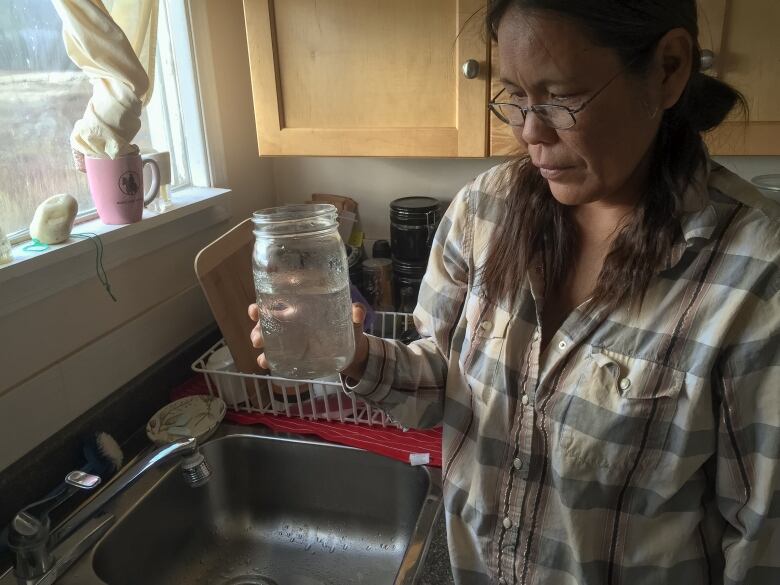B.C. Nazko First Nation asks: why can't we drink our water?
Water unsafe to drink at Nazko First Nation for over 16 years, despite new water treatment plant
The Nazko Water Treatment Plant is a sturdy concrete building that houses a multi-million dollartreatment system, and it was supposed to give the residents of Nazko First Nation something theyhaven't had for over 16 years: drinking water from their taps.
Except it hasn't worked yet.
"It's very upsetting. We live in Canada but on reserve it feels like Third World conditions," saysNazko Chief Stuart Alec. "Drinking, bathing it's pretty appalling these conditions exist in thiscountry."
A CBC News analysis of Health Canada data has found two-thirds of all First Nationcommunities in Canada have been under at least one drinking water advisory at some time in thelast decade.
The data shows the water has been unsafe to drink for 16.7 years at Nazko First Nation, anhour's drive from Quesnel in British Columbia's interior.
High levels of arsenic and manganesein the water mean the community isn't just under a boil water advisory, but a "do not consume"order.

"We can't even brush our teeth with our tap water. When you take a shower, the water smells likebleach," says elder Monica Paul. "I'm scared for the young children on our reserve...they needgood water to be healthy."
Bottled water has to be trucked into the community from Quesnel, then delivered to each home,at a total cost to the community of $4,000 per month.
Residents complain it's inconvenient tohaul bottles inside, and they have to ration it or theyrun out.
"I'd like to be able to use my running water tap to come with a glass, drink it, wash dishes withit, cook with it," says band member Hazel Paul.
Treatment plant breakdowns
What is especially puzzling about the community's water troubles is that shiny new treatmentplant, which sits smack dab in the middle of the reserve.
Nazko was at the top of the to-do list, when the Harper government announced in 2013 the Department of Aboriginal Affairs and Northern Development Canada (AANDC) was investing $330 million over two years in First Nation water and wastewater systems.
Nazko's water treatment plant, which cost $3.6 million dollars, was welcomed by the community.

Butfrom the get-go,Nazkowater operator Jerry Laurent has experienced one breakdown afteranother.
"This could have been avoided, if the plumbers had come right away," says Laurent. "But theywaited."
Amongst the many problems, according to Laurent, since the plant went operational in 2013: thechlorine injection line was air-locked, the manganese and arsenic filters stopped working, theback-flow check valve had to be replaced, and the backup generator broke down.
"I phone people to come out and fix it. But, they phone up the band office. They have to OK itfirst. They say there's no funding in place for it. So, the band office has to phone down toVancouver to AANDC...." says Laurent,and on it goes.
Lack of training
It doesn't help that Laurent isn't fully certified to operate such a state-of-the-art system. He'dlike to be, but he's still trying to log enough hours to get full certification.
AANDC's Circuit Rider Training Program is supposed to provide First Nationsoperators with hands on, on-sitetraining and mentoring. But Laurent says he only sees the circuit rider once every six months.
When CBC requested an interview from AANDC, officials responded with an email saying theDepartment expects the Nazko water treatment plant to be operational this month.
It pegs thecosts of the new arsenic filters at $58,000, but didn't mention any of the other problems, statingquestions about "operation, maintenance and management" are for the First Nation to answer.
"They sent money so it would look like they're dealing with the issue," says Chief Alec. "Butthey needed a project manager on the ground to oversee the project, and report to the band andAANDC. None of that happened."













_(720p).jpg)


 OFFICIAL HD MUSIC VIDEO.jpg)
.jpg)



























































































